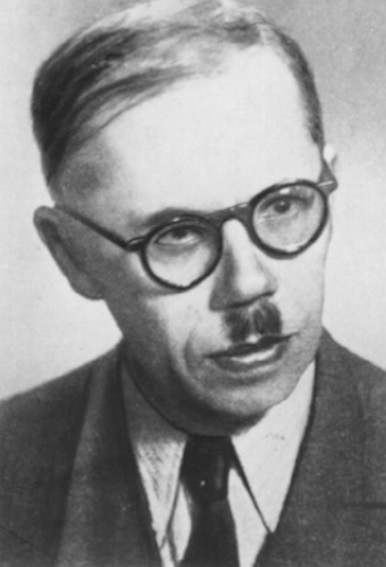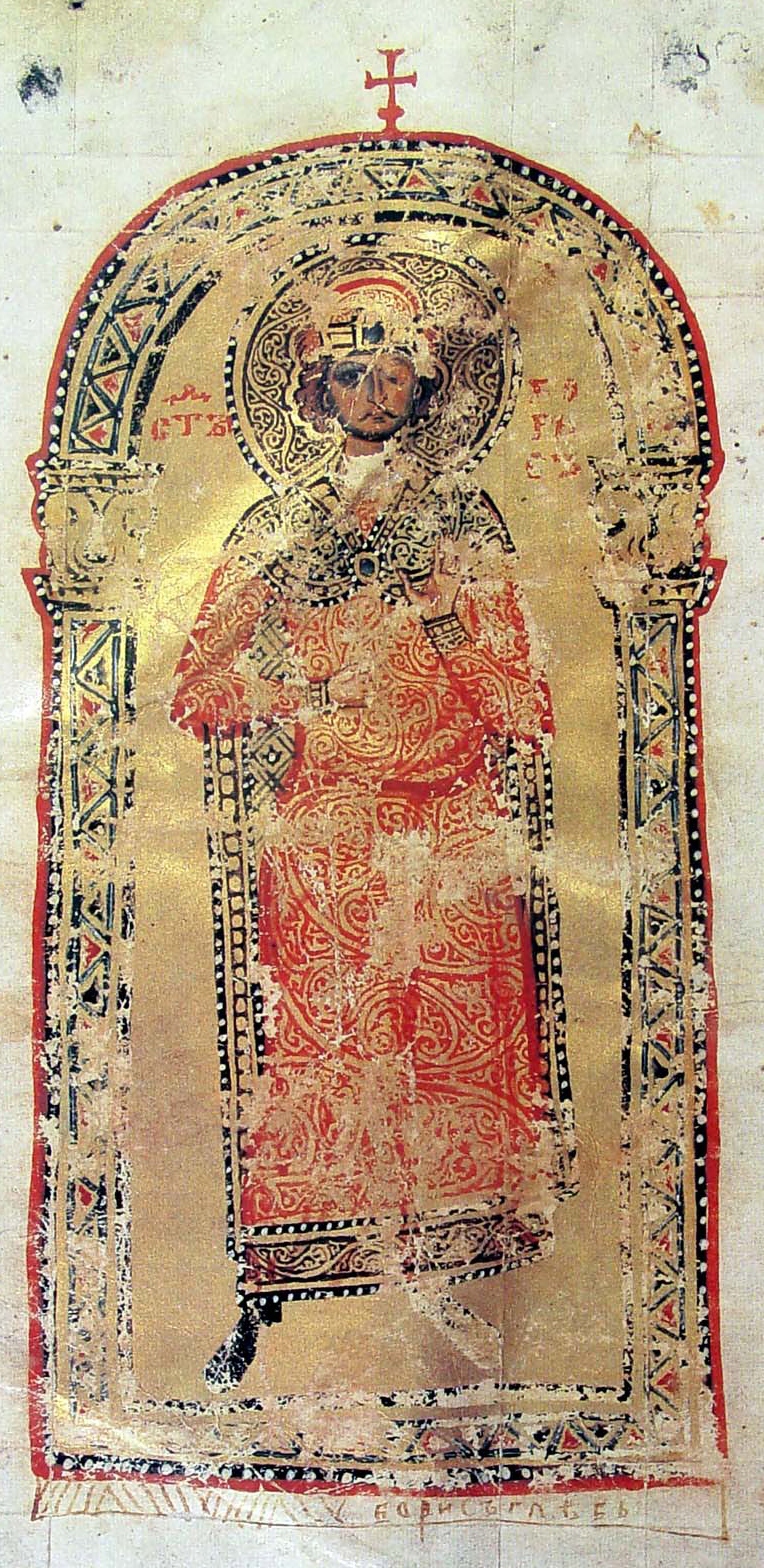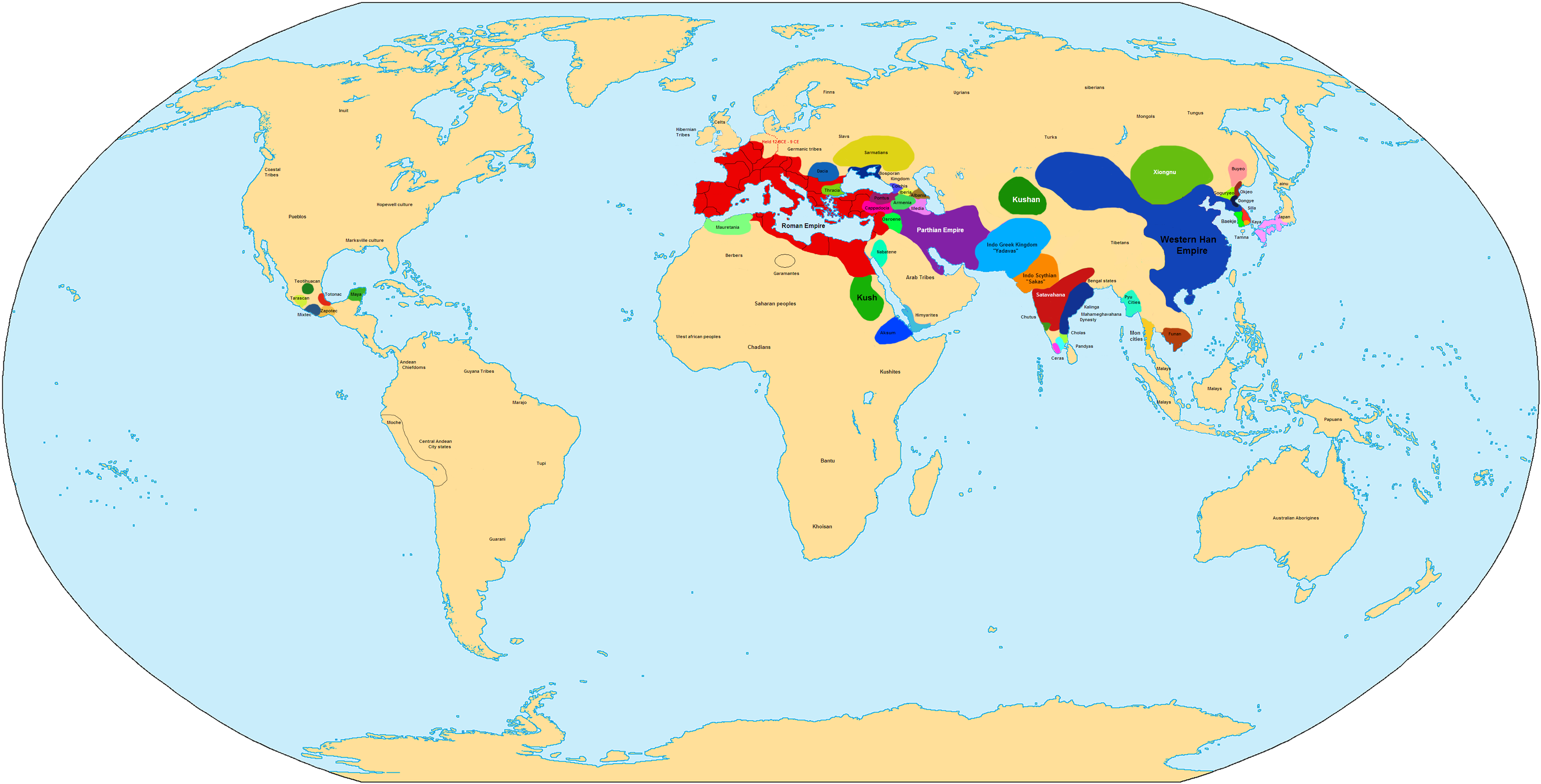|
Drevlyans
The Drevlians, Derevlians or Derevlianians ( or , ) were a tribe of East Slavs between the 6th and the 10th centuries, which inhabited the territories of Polesia and right-bank Ukraine, west of the eastern Polans and along the lower reaches of the rivers Teteriv, Uzh, Ubort, and Stsviha. To the west, the Drevlians' territories reached the Sluch River, where the Volhynians (related to the territory of Volhynia) and Buzhans (related to the name of Southern Bug) lived. To the north, the Drevlians' neighbors were the Dregoviches. Etymology Their name is derived from Slavic ''drevo/древо'' or ''derevo/дерево'', meaning "wood" and "tree", because they lived in the forests. Their name may be rendered "the dwellers in the forest". They possibly were mentioned as ''Forsderen-Liudi'' by Bavarian Geographer in the 9th century. The ''Primary Chronicle'' (PVL) mentioned that those Slavs who settled in open fields had been called ''Polyani'' (after the Slavic ''pole/пол ... [...More Info...] [...Related Items...] OR: [Wikipedia] [Google] [Baidu] |
East Slavs
The East Slavs are the most populous subgroup of the Slavs. They speak the East Slavic languages, and formed the majority of the population of the medieval state Kievan Rus', which they claim as their cultural ancestor.John Channon & Robert Hudson, ''Penguin Historical Atlas of Russia'' (Penguin, 1995), p. 16. Today Belarusians, Russians and Ukrainians are the existent East Slavic nations. Rusyns can also be considered as a separate nation, although they are often considered a subgroup of the Ukrainian people. History Sources Researchers know relatively little about the Eastern Slavs prior to approximately 859 AD when the first events recorded in the ''Primary Chronicle'' occurred. The Eastern Slavs of these early times apparently lacked a written language. The few known facts come from archaeological digs, foreign travellers' accounts of the Rus' land, and linguistic comparative analyses of Slavic languages. Very few native Rus' documents dating before the 11th century (none ... [...More Info...] [...Related Items...] OR: [Wikipedia] [Google] [Baidu] |
Kievan Rus'
Kievan Rus', also known as Kyivan Rus,. * was the first East Slavs, East Slavic state and later an amalgam of principalities in Eastern Europe from the late 9th to the mid-13th century.John Channon & Robert Hudson, ''Penguin Historical Atlas of Russia'' (Penguin, 1995), p.14–16. Encompassing a variety of polities and peoples, including East Slavs, East Slavic, Norsemen, Norse, and Finnic peoples, Finnic, it was ruled by the Rurik dynasty, founded by the Varangians, Varangian prince Rurik.Kievan Rus , Encyclopædia Britannica Online. The name was coined by Russian historians in the 19th century to describe the period when Kiev was preeminent. At its greatest extent in the mid-11th century, Kievan Rus' stretched from the White Sea in the north to the Black Sea in the south and from the River source, headwaters of the ... [...More Info...] [...Related Items...] OR: [Wikipedia] [Google] [Baidu] |
East Slavic Tribes Peoples 8th 9th Century
East is one of the four cardinal directions or points of the compass. It is the opposite direction from west and is the direction from which the Sun rises on the Earth. Etymology As in other languages, the word is formed from the fact that east is the direction where the Sun rises: ''east'' comes from Middle English ''est'', from Old English ''ēast'', which itself comes from the Proto-Germanic *''aus-to-'' or *''austra-'' "east, toward the sunrise", from Proto-Indo-European *aus- "to shine," or "dawn", cognate with Old High German ''*ōstar'' "to the east", Latin ''aurora'' 'dawn', and Greek ''ēōs'' 'dawn, east'. Examples of the same formation in other languages include Latin oriens 'east, sunrise' from orior 'to rise, to originate', Greek ανατολή anatolé 'east' from ἀνατέλλω 'to rise' and Hebrew מִזְרָח mizraḥ 'east' from זָרַח zaraḥ 'to rise, to shine'. ''Ēostre'', a Germanic goddess of dawn, might have been a personification of both da ... [...More Info...] [...Related Items...] OR: [Wikipedia] [Google] [Baidu] |
Henryk Łowmiański
Henryk Łowmiański (August 22, 1898 near Ukmergė - September 4, 1984 in Poznań) was a Polish historian and academic who was an authority on the early history of the Slavic and Baltic people. A researcher of the ancient history of Poland, Lithuania and the Slavs in general, Łowmiański was the author of many works, including most prominently the six-volume monumental monograph '' Początki Polski'' (''The Beginnings of Poland''). Scholar years Łowmiański was born to father Konstanty and mother Kazimiera ''née'' Rudzińska. After receiving his doctorate on the ''"Wschody" miast litewskich w XVI wieku'' (''Beginnings of Lithuanian Cities'') in 1924, Łowmiański became the first history Ph.D. in the University of Stefan Batory (USB). Prior the World War II, working as an academic archivist wrote a two-volume ''Studia nad początkami społeczeństwa i państwa litewskiego'' (1931-32), and a treatise ''Uwagi w sprawie podłoża społec-znego i gospodarczego Unii Jagielloński ... [...More Info...] [...Related Items...] OR: [Wikipedia] [Google] [Baidu] |
Knyaz Igor In 945 By Lebedev
A , also , ''knjaz'' or (), is a historical Slavic title, used both as a royal and noble title in different times. It is usually translated into English as 'prince', 'king' or 'duke', depending on specific historical context and the potentially known Latin equivalents at the time; the word was originally derived from the common Germanic ('king'). Feminine forms of the word may be divided into two groups: * "Princess", be it princess consort (wife of a reigning prince), princess regnant (reigning princess ''suo jure''), or princess regent (reigning on behalf of an underage prince, usually her son after her husband's death) ** Belarusian: ''kniahinia'' (княгіня) ** Bulgarian and Russian: () ** Slovene, Serbo-Croatian, and Macedonian: (in Serbian and Macedonian Cyrillic: ) ** Ukrainian: (княгиня) * "Daughter of the prince" ** Belarusian: ''kniazioŭna'' (князёўна) ** Russian: (; the son of a ''knyaz'' is ' ( in its old form). ** Ukrainian ... [...More Info...] [...Related Items...] OR: [Wikipedia] [Google] [Baidu] |
Handicraft
A handicraft is a traditional main sector of craft making and applies to a wide range of creative and design activities that are related to making things with one's hands and skill, including work with textiles, moldable and rigid materials, paper, plant fibers, clay, etc. One of the oldest handicraft is Dhokra; this is a sort of metal casting that has been used in India for over 5,000 years and is still used. In Sistan and Baluchestan Province, Iranian Baluchistan, women still make red ware hand-made pottery with dotted ornaments, much similar to the 4,000-year-old pottery tradition of Kalpurgan, an archaeological site near the village. Usually, the term is applied to traditional techniques of creating items (whether for personal use or as products) that are both practical and aesthetic. Handicraft industries are those that produce things with hands to meet the needs of the people in their locality without using machines. Collective terms for handicrafts include artisanry, ... [...More Info...] [...Related Items...] OR: [Wikipedia] [Google] [Baidu] |
Farming
Agriculture encompasses crop and livestock production, aquaculture, and forestry for food and non-food products. Agriculture was a key factor in the rise of sedentary human civilization, whereby farming of domesticated species created food surpluses that enabled people to live in the cities. While humans started gathering grains at least 105,000 years ago, nascent farmers only began planting them around 11,500 years ago. Sheep, goats, pigs, and cattle were domesticated around 10,000 years ago. Plants were independently cultivated in at least 11 regions of the world. In the 20th century, industrial agriculture based on large-scale monocultures came to dominate agricultural output. , small farms produce about one-third of the world's food, but large farms are prevalent. The largest 1% of farms in the world are greater than and operate more than 70% of the world's farmland. Nearly 40% of agricultural land is found on farms larger than . However, five of every six far ... [...More Info...] [...Related Items...] OR: [Wikipedia] [Google] [Baidu] |
First Millennium
File:1st millennium montage.png, From top left, clockwise: Depiction of Jesus, the central figure in Christianity; The Colosseum, a landmark of the once-mighty Roman Empire; Kaaba, the Great Mosque of Mecca, the holiest site of Islam; Chess, a new board game, becomes popular around the globe; The Western Roman Empire falls, ushering in the Early Middle Ages; The skeletal remains of a young woman, known as the "ring lady", killed by the eruption of Mount Vesuvius in AD 79; Attila the Hun, leader of the Hunnic Empire, which takes most of Eastern Europe (Background: Reproduction of ancient mural from Teotihuacan, National Museum of Anthropology, Mexico City), 400px, thumb rect 9 6 182 173 Jesus Christ rect 192 5 411 169 Roman Empire rect 420 16 560 101 Great Mosque of Mecca rect 416 112 561 212 Chess rect 13 189 171 356 Attila the Hun rect 184 177 308 346 Eruption of Mount Vesuvius in 79 AD rect 313 222 559 352 Early Middle Ages rect 1 1 566 394 Teotihuacan rect 1 1 566 394 Pil ... [...More Info...] [...Related Items...] OR: [Wikipedia] [Google] [Baidu] |
Korosten
Korosten (, ), also historically known as Iskorosten (), is a historic city and a large transport hub in Zhytomyr Oblast, northern Ukraine. It is located on the Uzh (Pripyat), Uzh River. Korosten serves as the Capital city, administrative center of Korosten Raion. As of January 2022, Korosten's population was approximately Name There are different theories about the origin of the name of the city. The name may be derived from the word ''korost'', 'brushwood, bushes, shrubbery'; the form ''Iskorosten'' sometimes found in early sources is probably based on the common repetition of prepositions in Old East Slavic: ''iz grada iz''... 'from the city from...'. Another theory holds that the city was built entirely of wood, and its walls were surrounded by an oak fence, unhewn, with bark, leading to the name Is-koro-sten, i.e. the city "from bark on the wall" in Ukrainian. Alternatively, the city might have been named after the sun god Khors/Xors - the main god of many tribes that i ... [...More Info...] [...Related Items...] OR: [Wikipedia] [Google] [Baidu] |
Mal (prince)
Mal or MAL may refer to: Places * Mal (community development block), in Jalpaiguri district of West Bengal, India * Mal (Vidhan Sabha constituency), an assembly constituency in Jalpaiguri district of West Bengal, India * Malbazar or Mal, a town in Jalpaiguri located in North Bengal, India * Mal, Lucknow, a village in Lucknow district of Uttar Pradesh, India * Mar-a-Lago, a resort in Palm Beach, Florida Acronyms * MAL (gene), a human gene that encodes myelin and lymphocyte protein * Maackia amurensis leukoagglutinin, lectin from the tree ''Maackia amurensis'' * MAL Hungarian Aluminium, a Hungarian aluminum manufacturer * Maritime Administration of Latvia, government agency of Latvia that oversees maritime affairs * Median arcuate ligament, a ligament under the diaphragm on the posterior abdominal wall * Message Abstraction Layer, a CCSDS Spacecraft Monitor and Control standard * Methyl aminolevulinate, a photosensitizer used for photodynamic therapy for skin problems * ... [...More Info...] [...Related Items...] OR: [Wikipedia] [Google] [Baidu] |
Prince
A prince is a male ruler (ranked below a king, grand prince, and grand duke) or a male member of a monarch's or former monarch's family. ''Prince'' is also a title of nobility (often highest), often hereditary, in some European states. The female equivalent is a princess. The English word derives, via the French word ''prince'', from the Latin noun , from (first) and (head), meaning "the first, foremost, the chief, most distinguished, noble ruler, prince". In a related sense, now not commonly used, all more or less sovereign rulers over a state, including kings, were "princes" in the language of international politics. They normally had another title, for example king or duke. Many of these were Princes of the Holy Roman Empire. Historical background The Latin word (older Latin *prīsmo-kaps, ), became the usual title of the informal leader of the Roman senate some centuries before the transition to empire, the '' princeps senatus''. Emperor Augustus establishe ... [...More Info...] [...Related Items...] OR: [Wikipedia] [Google] [Baidu] |
Malyn
Malyn (, ) is a city in Zhytomyr Oblast (province) of Ukraine located about northwest of Kyiv. It served as the administrative center of Malyn Raion until the administrative reform in 2020, when it was merged into Korosten Raion. Population: Located in a wooded area of Polesia (literally woodland), the city is known for its paper factory and a sheet of paper is depicted on the city's coat of arms. The city is located on the Irsha river which is a left tributary of Teteriv. Through the city runs an important railroad Kyiv – Korosten and a motor vehicle highway Kyiv-Kovel-Warsaw. The town hosts a seismic monitoring station (designated PS-45) belonging to an international network of nuclear test monitoring stations intended to verify the Comprehensive Test Ban Treaty (CTBT) treaty. History The name of the city is traditionally connected with Prince Mal of the Drevlians mentioned in the Russian chronicles, particularly during the Drevlian uprising of 945 against Igor, the G ... [...More Info...] [...Related Items...] OR: [Wikipedia] [Google] [Baidu] |






